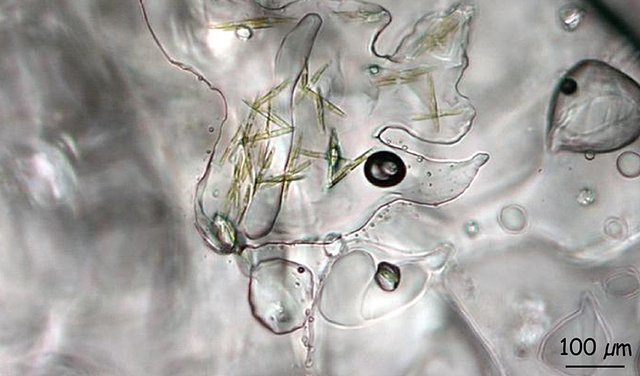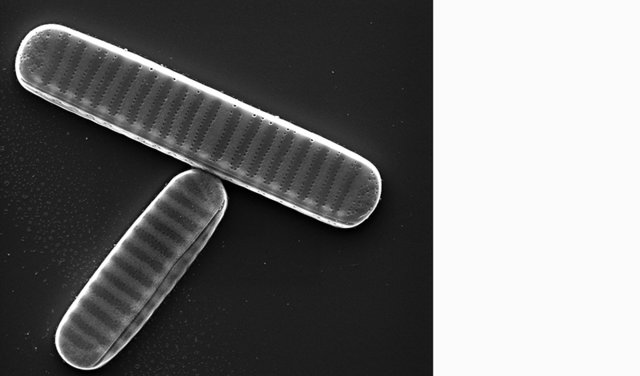More images of the alga Fragilariopsis cylindrus
 The diatom Fragilariopsis cylindrus survives in small channels that are formed in the ice when seawater freezes. In the extreme habitats extreme temperatures can reach - 30 ºC, with a salinity up to four times that of normal seawater, and an extreme shortage of light. To survive in this brine soup, the diatoms need to protect themselves from freezing, high salinity and develop an efficient photosynthetic apparatus. This is why algal researchers find the species so fascinating. Light microscopy: Dr. Karen Junge, University of Washington , USA
The diatom Fragilariopsis cylindrus survives in small channels that are formed in the ice when seawater freezes. In the extreme habitats extreme temperatures can reach - 30 ºC, with a salinity up to four times that of normal seawater, and an extreme shortage of light. To survive in this brine soup, the diatoms need to protect themselves from freezing, high salinity and develop an efficient photosynthetic apparatus. This is why algal researchers find the species so fascinating. Light microscopy: Dr. Karen Junge, University of Washington , USA
 Nine individual cells of Fragilariopsis cylindrus next to each other. Each cell contains two chloroplasts which used to produce energy in the process called photosynthesis. The accessory pigment fucoxanthin gives the chloroplasts their brown colour. Light microscopy: Dr Gerhard Dieckmann, Alfred Wegener Institute for Polar and Marine Research, Germany
Nine individual cells of Fragilariopsis cylindrus next to each other. Each cell contains two chloroplasts which used to produce energy in the process called photosynthesis. The accessory pigment fucoxanthin gives the chloroplasts their brown colour. Light microscopy: Dr Gerhard Dieckmann, Alfred Wegener Institute for Polar and Marine Research, Germany
 Top view of two Fragilariopsis cylindrus shells which reveals characteristic structure which researchers can use to identify the species. The silica-rich structures are of interest to physicists as well as biotechnologists. Preparation and SEM microscopy: Dr Gerhard Dieckmann, Alfred Wegener Institute for Polar and Marine Research, Germany
Top view of two Fragilariopsis cylindrus shells which reveals characteristic structure which researchers can use to identify the species. The silica-rich structures are of interest to physicists as well as biotechnologists. Preparation and SEM microscopy: Dr Gerhard Dieckmann, Alfred Wegener Institute for Polar and Marine Research, Germany
Photos of the press release "Alga of the Year" 2011: Fragilariopsis cylindrus loves the extremes
Copyrights
Use of the images is only permitted in connection with reporting on the topic ‘alga of the year 2011’ and only if the photographers are acknowledged in the format: first name, second name, institution. Commercial use of the images is not permitted.
download more images (details, habitat, close up)

